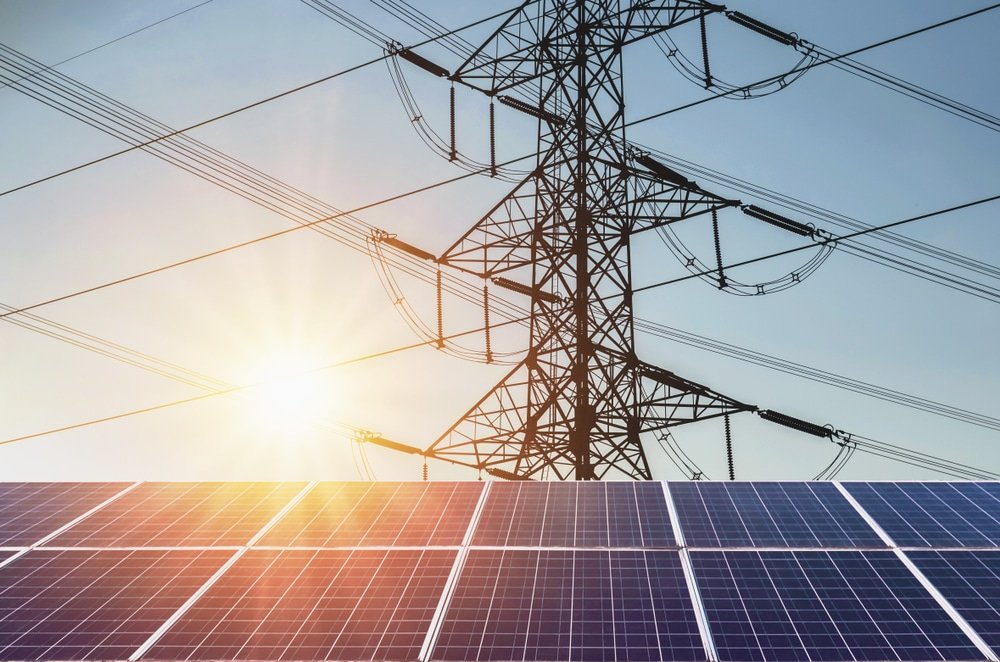With the aim of addressing the challenges posed by climate change and increasing power demands, the Biden-Harris Administration, via federal agencies, invested in critical grid infrastructure upgrades and clean energy projects.
The US Department of Energy (DOE) revealed a $3.5 billion funding for 58 projects in 44 states to fortify the aging U.S. power grid against extreme weather and fires and integrate renewable energy sources.
Meanwhile, two other agencies, the US Department of the Treasury (USDT) and the US Department of Housing and Urban Development (HUD), launched a clean energy project tax bonus and awarded building retrofit funds, respectively.
Upgrading Power Grid Through Renewables
The DOE’s funding comes from the Bipartisan Infrastructure Law, marking the most substantial direct investment in the grid to date. The initiative is a response to the challenges posed by climate change-induced disasters and increasing power demands from new technologies like electric vehicles and AI.
Energy Secretary Jennifer Granholm emphasized the need for a more robust, larger, and smarter grid to accommodate the evolving landscape of energy production and consumption.
The projects include plans to generate over 35 GW of renewable energy and establish 400 microgrids to enhance energy independence. Microgrids refer to self-sufficient energy systems.
More than 75% of the projects have collaborations with the International Brotherhood of Electrical Workers union. The goal of this partnership is to keep or generate union jobs.
Notably, the funding is part of the DOE’s larger $10.5 billion grid resilience and innovation partnerships (GRIP) program.
One remarkable project, receiving more than $507 million, focuses on bolstering remote communities in Georgia. The funding will enhance a smart grid in the state, incorporating battery storage, local microgrids, and transmission lines.
Over in Pennsylvania, PECO Energy will work on improving grid reliability and resilience by implementing various measures. These include flood mitigation for substations, updating aging infrastructure, and deploying battery systems for backup power.
Moreover, some initiatives aim to expand transmission across multiple states, including a wildfire mitigation project in Western states. For the complete list and information of the GRIP selected projects for award negotiations, refer to the DOE’s website.
Boosting Clean Energy and Zero-Energy Buildings
In a separate announcement, the federal government also unveiled another important initiatives under the Inflation Reduction Act. The goal is also to bolster renewable energy access and enhance climate resilience in low-income communities.
These efforts, spearheaded by the USDT, DOE and HUD, include bonus incentives under Section 48(e) for small clean energy projects and awards for resilient, zero-energy housing.
Under the bonus credit program, the agencies pledged support for qualifying wind and solar energy facilities in low-income communities.
With a capacity of 1.8 GW for 2023, the program enables eligible wind and solar facilities to benefit from a 10 or 20 percentage-point increase to the investment tax credit of up to 30%. Eligible renewable energy facilities must have a maximum output of <5 MW.
These incentives aim to drive investments into underserved areas and significantly reduce energy costs and pollution. Applications for this year’s program are acceptable until early 2024.
The HUD’s Green and Resilient Retrofit Program (GRRP) manages the other funding program for resilient, zero-energy retrofits. The agency allocated $103.4 million in loans and grants for the renovation of over 1,500 low-income households.
The funding will facilitate substantial retrofits to ensure climate resilience and achieve zero-energy status for those residential buildings. This effort reinforces the administration’s commitment to affordable and sustainable housing for low-income families.
-
With a total investment of >$800 million in grant and loan subsidy, the HUD program awarded >$121 million to date.
This recent financial support comes at the heel of the HUD’s prior funding allocations. These include the Elements category that focuses on climate resilience and utility efficiency measures.
Likewise, the DOE also launched its Earthshot program earlier this month to achieve a minimum of 50% cost reduction in decarbonizing homes and lowering energy costs for residents by 20% within the next 10 years.
These funding initiatives directed towards grid fortification and clean energy expansion reflect the Biden-Harris Administration’s commitment to sustainable and resilient energy solutions. By prioritizing grid resilience, renewable energy integration, and climate-conscious housing retrofits, these efforts aim to foster a greener and more sustainable future for communities across the nation.

